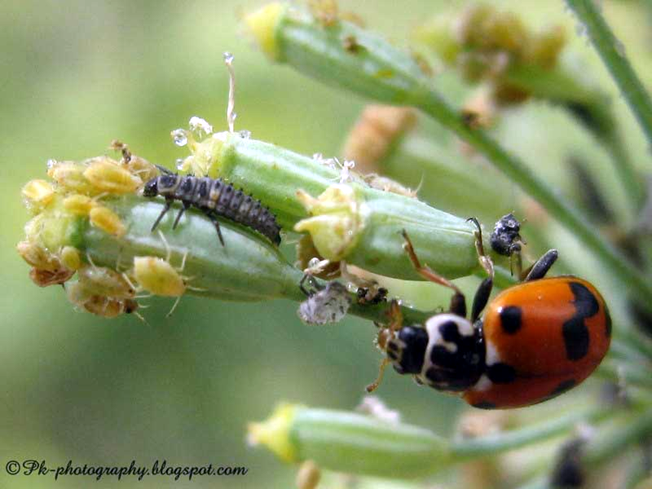17 February 2014 | By Cang Hui
The expansion of agricultural activities and the habitat changes that occur in agro-ecosystems cause rapid compositional changes in agricultural landscapes as crops are planted, harvested and rotated from year to year. This shifting mosaic pattern of crop fields can affect the dynamics of important insect pests, such as cereal aphids, and their natural enemies. These changes may in turn alter the structure and function of insect food webs on a regional scale and reduce the success of biological control programmes.
C·I·B researcher Cang Hui and his co-workers examined the effects of the landscape changes that take place in wheat fields, particularly changes in the area of land under cultivation, on the interactions between cereal aphid pests and their natural enemies (e.g. lady birds, spiders, carabid beetles), and between cereal aphid pests and their bio-control agents, Aphidius parasitic wasps.
The results, published in the journal Basic and Applied Ecology, showed that the population densities of one cereal aphid (Macrosiphum avenae), one parasitic wasp (Aphidius avenae), two specialist predators (ladybirds: Hippodamia variegata and H. tredecimpunctata) and one hyperparasitic wasp (Pachyneuron aphidis) declined following the expansion of wheat cropping, supporting the predictions that invertebrate population densities should decline for a short period when new fields are planted, and increase when patch size is reduced by harvesting.
In contrast, the populations of one cereal aphid (Schizaphis graminum), one parasitic wasp (A. gifuensis), two generalist predators (spiders: Pardosa astrigera; and carabid beetles: Chlaenius pallipes), and two hyperparasitic wasps (Asaphes suspensus, and Alloxysta sp.) did not respond to inter-annual changes in field area.
The authors concluded that landscape homogenisation reduced the effectiveness of bio-control programmes when there was an increase in the proportion cover of wheat fields in the agricultural landscape. Therefore, the change in area under cultivation in agricultural landscapes plays an important yet complex role in optimising the efficiency of biological pest control programmes.

[Image by M. Quresh at http://pk-photography.blogspot.com]
